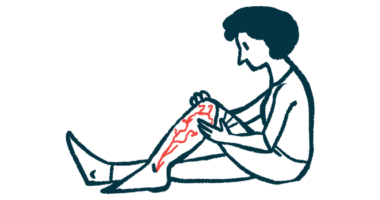6 Genes Seen to Influence Age at Which Common Type of FAP Strikes

In the largest registry worldwide for a common subtype of familial amyloid polyneuropathy, known as FAP ATTRV30M, researchers identified six genes variants that influence the age at which disease symptoms become evident in a person and that may point the way to new treatments.
The study, “Familial amyloid polyneuropathy in Portugal: New genes modulating age‐at‐onset,” was published in the journal Annals of Clinical and Translational Neurology.
FAP is characterized by transthyretin (TTR) amyloid deposits that cause nerve disease. The condition, which is linked to a point mutation (defect) in the Ttr gene, shows a wide variation in age‐at‐onset between affected individuals, even within families and among generations. Several different mutations have been identified, but the Val30Met (V30M) mutation is the most common worlwide.
In a previous study, researchers identified some candidate genes that can modify age‐at‐onset using a case-control approach.
In a follow-up study and with a family‐centered approach, researchers confirmed that the genes for amyloid P component, serum (Apcs) and plasma retinol‐binding protein 4 (RBP4), as well as the androgen receptor (Ar) gene influence age‐at‐onset.
Here, they extended their analysis and used the Portuguese registry to search for additional candidate genes that may play a role as modifiers of age‐at‐onset variation between generations in families, who have the disease carrying the V30M missense mutation, and which is known as FAP ATTRV30M. (A missense mutation affects amino acids, the building blocks of proteins, making a protein unstable or nonfunctional.)
In total, researchers collected DNA samples and clinical data from 318 patients (106 families) with FAP ATTRV30M. Specifically, the team investigated the potential role of nine candidate genes — Ngal, Mmp-9, Bgn, Mek1, Mek2, Erk1, Erk2, Hsp27, and Ywhaz — as modifiers of age‐at‐onset. Additionally, they assessed the functional impact of significant variants associated with age‐at‐onset.
“We found for the first time variants from six genes (Ngal, Bgn [in the female group], Mek1, Mek2, Hsp27, and Ywhaz) that were significantly associated with early‐ and/or late‐onset,” researchers wrote.
Additionally, a strong interaction was found between two particular genes, Ngal and Mmp-9. The Ngal and Mmp-9 genes are linked to the remodeling of extracellular matrix (ECM)‐related components.
In women, a variant of the Ngal gene was associated with an earlier disease onset. This prompted researchers to hypothesize this variant as a genetic risk factor for FAP ATTRV30M patients. In contrast, the variant identified in the Bgn gene was associated with a later onset, which suggests that this variant might have a protective effect in female patients.
Four variants of the Mek1 gene were associated with earlier, and one with later, disease onset. Some variants of the Mek1 gene were found capable of modulating the expression of other genes, with authors proposing that “the inhibition or activation of the factors involved in the MEK1/2 signaling cascade can be good targets for the development of novel therapeutic approaches.”
Overall, “we reveal for the first time, using a family‐centered approach, that variants of NGAL, BGN, MEK1, MEK2, HSP27, and YWHAZ may act as potential genetic modulators of age‐at‐onset in FAP ATTRV30M, which could be useful for the development of novel therapeutic approaches, improve patient care, and aid in the genetic counseling of mutation carriers,” the researchers concluded.






